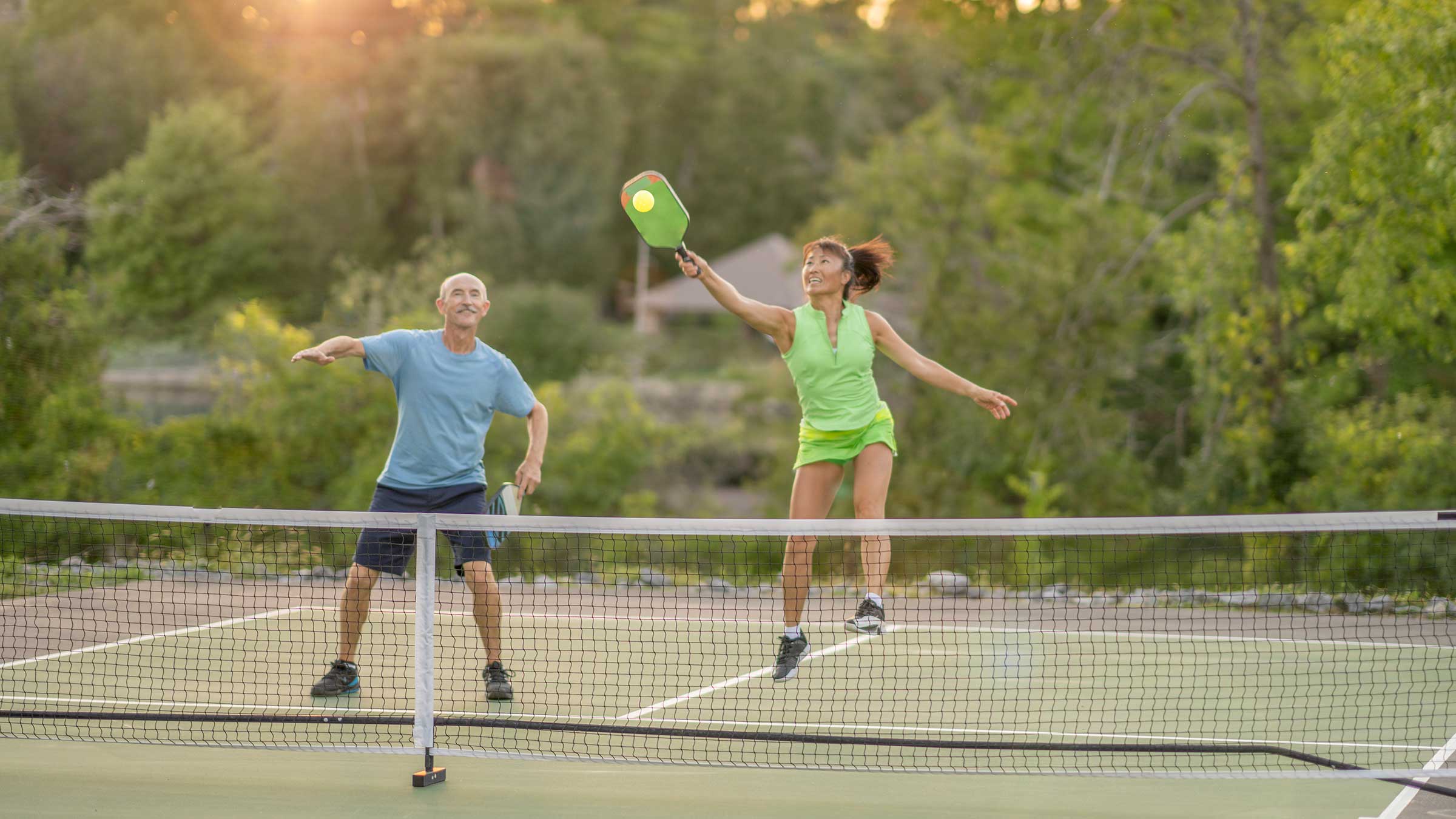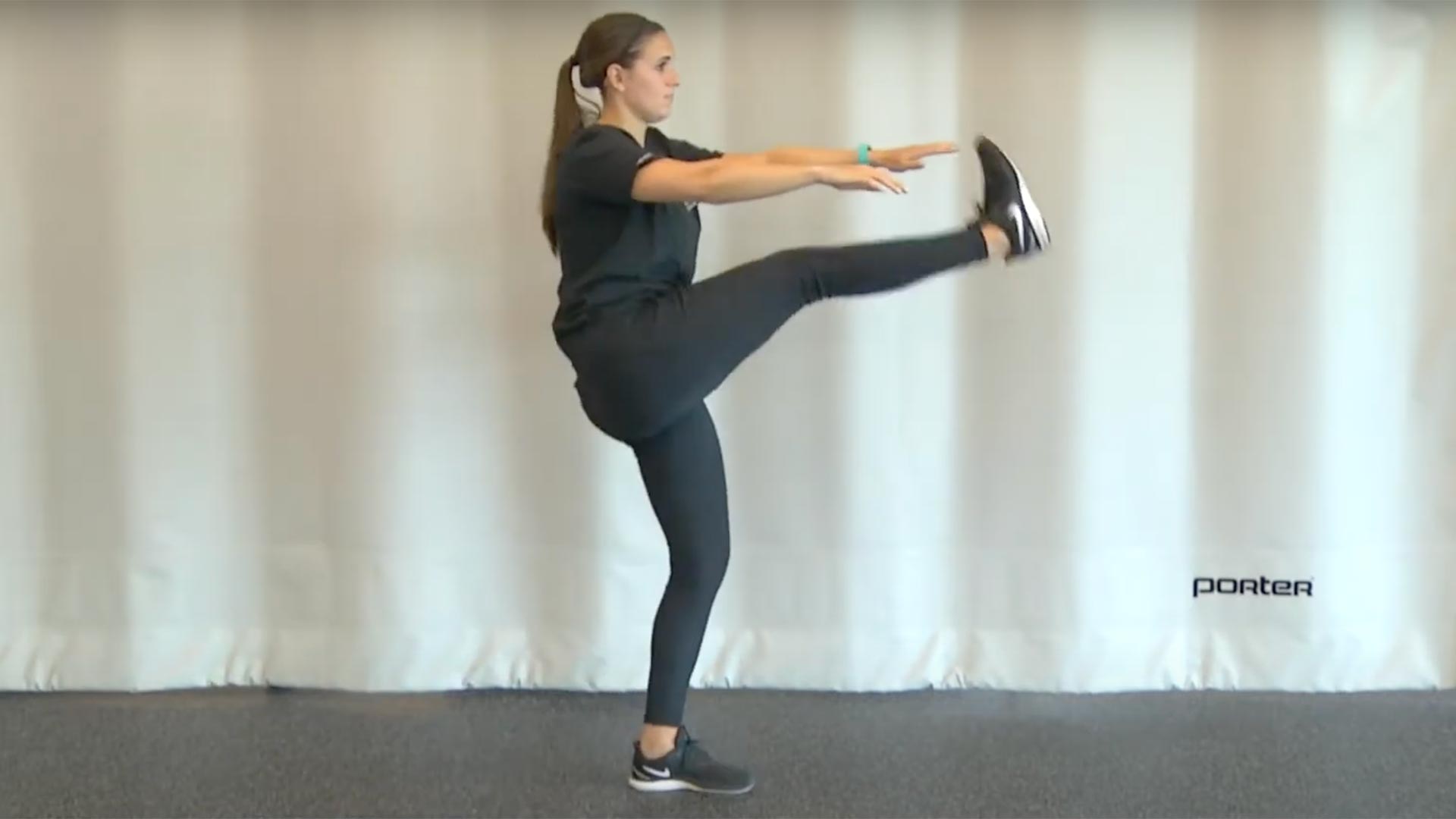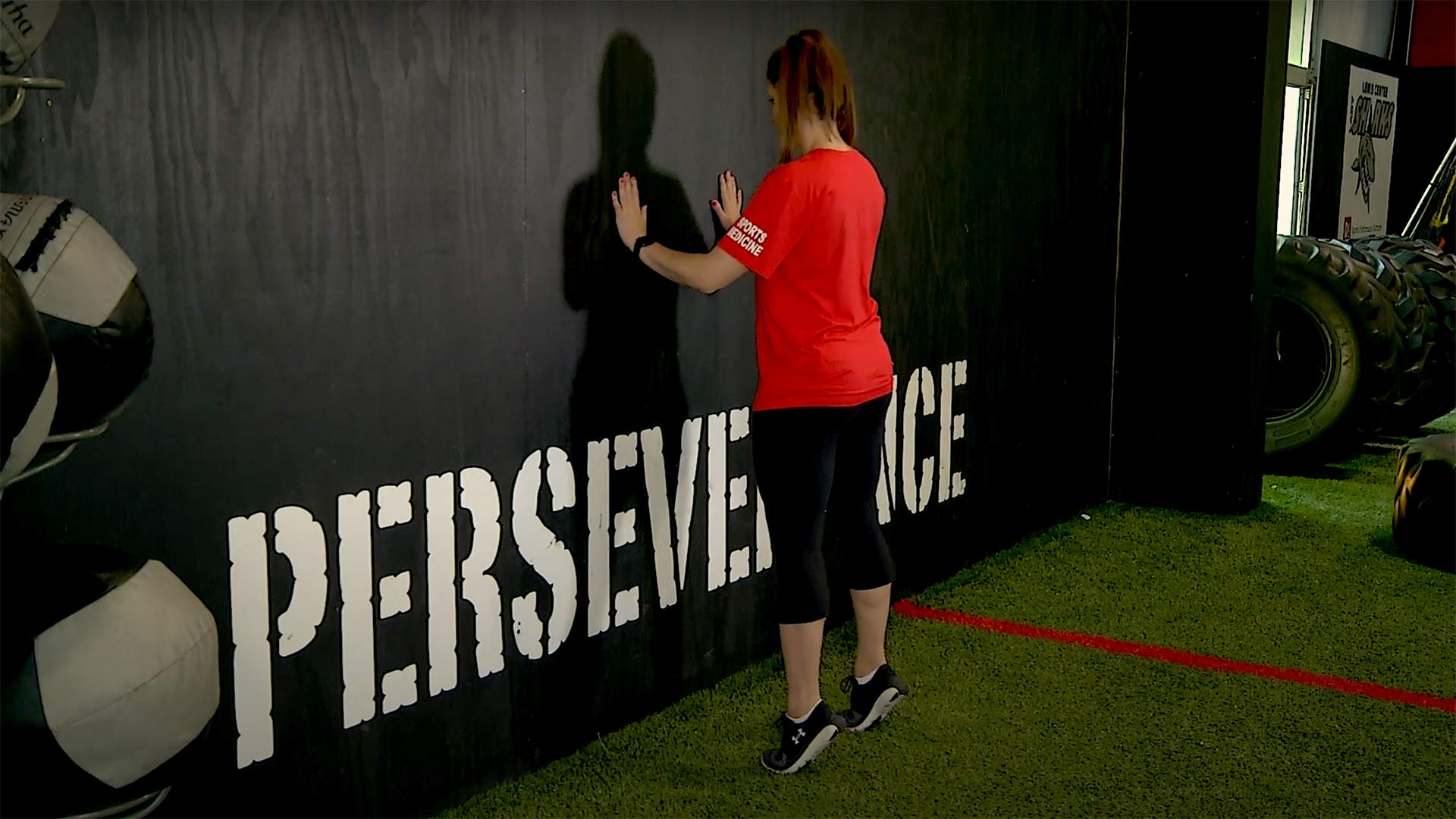
If you haven’t picked up a racquet and tried it, you probably know someone who has.
Pickleball is the fastest growing sport in America.
But with its rapid rise in popularity has come a deluge of sports-related injuries.
“Every other patient that I see these days plays pickleball. In the last three years, it’s exploded,” says Julie Bishop, MD, an orthopedic surgeon at The Ohio State University Wexner Medical Center’s Jameson Crane Sports Medicine Institute.
Orthopedic doctors see pickleball players of all ages, but most of her pickleball patients are 50 and up.
Pickleball-related fractures increased 90-fold in the last five years for players in their 60s, according to data released by the American Academy of Orthopaedic Surgeons in 2024.
“The popularity of the sport has allowed some patients that were not otherwise active to find a place where they can have fun and gain exercise,” says Larry Nolan, DO, a primary care sports medicine doctor. “Many are new to the game or recently picked up a racquet in exchange for other sports.”
Four Ohio State orthopedic doctors explain what injuries they’re seeing and give tips on how to stay injury-free on the court.
- Julie Bishop, MD, an orthopedic surgeon who specializes in minimally invasive repairs for complex shoulder injuries and a clinical professor of Orthopaedics at The Ohio State University College of Medicine
- David Flanigan, MD, an orthopedic surgeon specializing in knee injuries and a clinical professor of Orthopaedics at the Ohio State College of Medicine
- Larry Nolan, DO, a primary care sports medicine physician focusing on non-surgical approaches and a clinical assistant professor of Family and Community Medicine at the Ohio State College of Medicine
- W. Kelton Vasileff, MD, an orthopedic surgeon specializing in hip injuries and a clinical associate professor of Orthopaedics at The Ohio State University College of Medicine
“As sports doctors, we want people to be active. It's important to get our bodies moving, and that sometimes does need to be tailored or adjusted based on previous injuries and any health issues,” Dr. Flanigan says. “Our goal is to have as many people as active as possible and enjoying some of these activities.”
Shoulders/rotator cuffs
Repetitive overhead swings and serves can exacerbate shoulder problems
“Most rotator cuff tears are degenerative, which means it’s age-related. It's wear and tear. It's life,” Dr. Bishop says. “With older pickleball players, it’s interfering with their ability to play pickleball. It's tendinitis, degenerative rotator cuff tears and biceps tendinitis.”
Prioritize strength training and good form
For many pickleball players, it’s not a sport they’ve played all their life.
“I really believe everyone should be doing a nice rotator cuff strengthening program, because they're going to be using that arm a lot, especially if it's not something they've ever done before and they’ve got the pickleball bug,” she says. “You're asking a shoulder that's never done an overhead sport to do it like four times a week.”
Continuing to play means focusing on strength training and good form.
“I would advise them, even though you love it, you want to ease into it. You want good shoulder health,” Dr. Bishop says. “You should work on your flexibility, work on your posture and make sure you have good form when you're playing.”
Always listen to your body, and don’t ignore pain
“You can keep the shoulder as healthy as possible. Then if you if you start to feel something, you have to listen to it,” she says. “If you're having a little discomfort, and you just need an Advil afterward, that's OK. But if you are having sharp pain that you are feeling actively when you're playing repeatedly, yes, you should see a doctor.”
Physical therapy can do wonders, and it’s backed by research
For those who have tears, physical therapy can strengthen surrounding muscle groups to support the shoulder.
“You improve your mechanics so that you don't have any symptoms from the tear. If you don't have symptoms from a tear, you don't need to have any surgery,” she says. “The only people that we really proceed with surgery are people who have a traumatic injury. They dramatically fall on an outstretched hand. They lose their shoulder function or they have a traumatic tear. Those people really do need to have surgery.”
If you move forward with surgery, focus on your recovery
“We've become a sedentary population. We should do everything we can to stay active. Pickleball is the rage. It gets people out. It gets them socializing and out of their home. They're getting exercise. That's so good in so many ways,” Dr. Bishop says. “You shouldn't let a shoulder injury get you depressed.”
In many cases, patients who need surgery are out for six months but they are able to return to playing.
“The reward is that the results are good,” Dr. Bishop says. “When you get on the other side, then you can go back to something that gives you joy and improves your quality of life.”
Hips
Most common hip injuries from pickleball
- Femoroacetabular impingement with labrum tears — This is related usually to the way the bones of the hip joint are shaped that for some people can cause damage and pain to the hip joint cartilage and labrum.
- Greater trochanter pain syndrome — which is paired with IT band pain — This is pain on the side of the hip (as opposed to the front or back) that is painful with activity, frequently tender on the side of the hip and commonly is painful laying on that hip. Gluteal tendon injuries have similar symptoms and are often connected.
- Hamstring injuries
Prioritize strength training
“From a hip perspective, players should maintain a baseline fitness level,” Dr. Vasileff says. “Strength training is always a good idea, and cross training is important.”
“A lot of us have weak core, low-back and gluteal muscles, and these are important to train and keep strong, especially with a lot of quick movement and lateral transitions. Some of these muscles require more specific training and smaller movement exercises to strengthen.”
Pickleball often exacerbates chronic hip issues
For those who have chronic hip pain issues, the treatment is often rest, medication, physical therapy and injections such as cortisone.
“Anyone can play pickleball, although some might need to temper their expectations and modify their game to accommodate certain chronic conditions,” Dr. Vasileff says.
Knees
“There's obviously a lot more in the older generation who are playing pickleball who may not have been as athletically involved for a while,” Dr. Flanigan says. “They are moving in the ways that they have to move for pickleball, so that can obviously make them prone to injury.”
Most common pickleball knee injury: meniscus tears
Besides the occasional major anterior cruciate ligament (ACL) injuries, most pickleball injuries are meniscus tears or medial collateral ligament (MCL) sprains from side-to-side movements playing.
“Just with the twisting and turning, it's very easy for them to tear that meniscus,” Dr. Flanigan says.
The meniscus is a cushion, or like a shock absorber, within the knee between bones. There are two in each knee.
MCL sprains
The knee is held together by a series of four ligaments. The ligaments located on the inner side of the knee can sometimes get injured from sudden side-to-side movements.
“For pickleball injuries, it typically means that you've stretched that ligament, and most of the time with the MCL that will heal with therapy. Bracing also helps,” Dr. Flanigan says.
Fortunately, plenty of blood flow at that location means your body is more likely to heal from an injury.
Meniscus tears can speed the development of arthritis
“The ones I've seen with pickleball injuries are typically ones that we want to be more aggressive to repair, trying to slow down arthritic changes over time,” Dr. Flanigan says.
Preventing knee injuries
- Incorporate weight training. Make sure that you are doing some weight training, just to maintain muscle tone.
- A good stretching program. You want to keep your joints limber.
- Core exercises help with abdominal strength. You want to make your core as strong as possible for the movements that you need to do.
Ankles
Lower extremity injuries are very common in pickleball.
If you notice symptoms including swelling, skin changes or numbness/tingling in your ankles or feet, then you should visit a physician.
Here are some of the most common ones:
- Tendinitis issues arising from repetitive motions without enough rest periods. Inflammation is a common symptom. Overuse injuries typically develop more slowly, with gradual worsening if the area isn’t addressed.
- Muscle and tendon strains can happen from a sudden change of direction or abrupt stop during play. This can happen in the form of Achilles or calf strains/tears. “The Achilles tear generally occurs with the sensation of a pop or snap in the back of the leg,” Dr. Nolan says.
- Inversion injuries, also known as rolling your ankle, are most common, resulting in an ankle sprain, affecting the ligaments on the outside. This injury can range from a one- to two-week recovery associated with a mild ankle sprain, to a more significant injury. “Repetitive motions such as changing directions, jumping and changing pace can lead to overuse injuries,” he says.
Physical therapy will get you back on the court sooner
Each injury is unique, but most athletes return to their previous level of activity around three to four weeks.
Best way to keep ankles strong and healthy
A proper warm-up and cool-down are great to help prevent injuries. This may not just include static stretching but a more dynamic routine to help prepare the body for pickleball.
Calf strengthening and improving ankle balance are great ways to recover from injury as well as helping to prevent future issues.
Many of the exercises for the lower extremity can be done with a single stair or bands.
There are plenty of resources online, but you can also check in with a physical therapist to get exercises tailored for your specific needs.

Ready to be at the top of your game?
Ohio State’s sports medicine experts are here to keep you in your game, maximize your performance and keep you healthy.
Learn more






